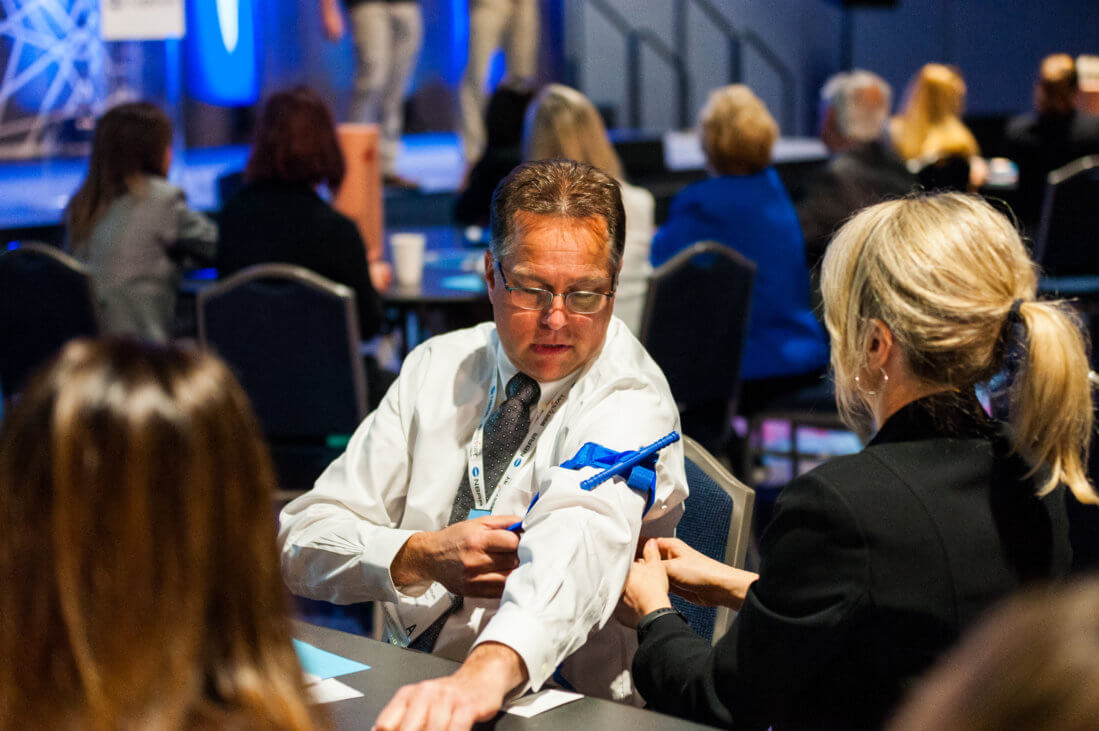
May 16, 2019
When it comes to a trauma situation, well-trained employees can make the difference between tragedy or close call.
During two security-focused sessions at the recent NBAA Maintenance and Flight Attendants/Flight Technicians conferences, risk mitigation experts provided attendees with practical strategies to reduce harm to themselves and provide potentially lifesaving support to injured persons.
Every Soldier a Sensor
A common refrain in the U.S. Army, it speaks to a simple truth: people on the ground are the best equipped to detect any problem before they arise. With potentially catastrophic costs for lessons learned the hard way, sharpening employee risk mitigation skills through investment in security resources, ongoing team exercises and expert instruction can provide significant value to organizations.
“Training people to take what they’re seeing and view it in the context of security provides a lot of ROI for the organization,” Security Council member Clay Hendon said during the Maintenance Conference Planning for Better Security session.
Irregular passenger behavior and unfamiliar persons or luggage are types of potential risk factors business aviation pilots, flight attendants and other personnel will be the most attuned to. Likewise, these individuals will be in the best position to determine escape routes, choke points and other critical factors in case of fire or natural disaster.
“You’re constantly reading, thinking about, and interacting with your environment and all the folks in your department, and as a result you’re in the best position to notice shifts or changes,” Hendon said.
Avoid, Deny, Defend
In an active shooter or other violent attack scenario, conventional wisdom has been to employ a “Run, Hide, Fight” approach. Speaking to a packed room at the Flight Attendants/Flight Technicians Conference, Marietta Police Department officers Brian Marshall and Jake King advocated an alternative approach: avoid contact, deny access, defend yourself.
“You want to actively contribute to your safety and protection,” advised King. “Every second we create that’s not a part of the shooter’s plan affects the outcome of the event.”
Avoiding contact can include leaving immediately through a secured main exit or creating secondary exits. If unable to leave, denying access – including locking doors, turning off lights and barricading doorways – is the best way to keep distance between you and danger.
If all else fails, King said that strategically fighting back with everything you have typically results in the perpetrator losing. Best practices for immediate defense include positioning by doorways to limit your exposure and specifically going after the attacker’s eyes, breathing and gun.
Stop the Bleeding
In a violent situation, law enforcement’s main priority is to stop the killing, and only then to stop the dying. Once an individual has ensured their own safety – “If the situation is still active, don’t stay there and be a target,” warned Marshall – they can serve a critical role in providing medical support.
“Especially in a mass casualty incident, first responders will be overwhelmed in the first 20 minutes with lots of problems,” said Marshall. “How can you contribute during this time? Patient assessment, stopping traumatic or hemorrhagic bleeding, identifying or helping triage patients – these are all things that anybody can be taught that make a big difference.”
Advocating attendees to pursue Stop the Bleed training, Marshall explained the “ABCs of Bleeding Control”: alert authorities by calling 911, identify bleeding (particularly from arteries) and compress the injury to limit blood loss. Attendees at the session received hands-on training in the latter, with the officers visiting each table to instruct them on tourniquet construction and application.
“Once you’re in a traumatic situation, you’re not a bystander anymore – you’re either a victim or part of the solution,” said Marshall.


 International Business Aviation Council Ltd.
International Business Aviation Council Ltd.